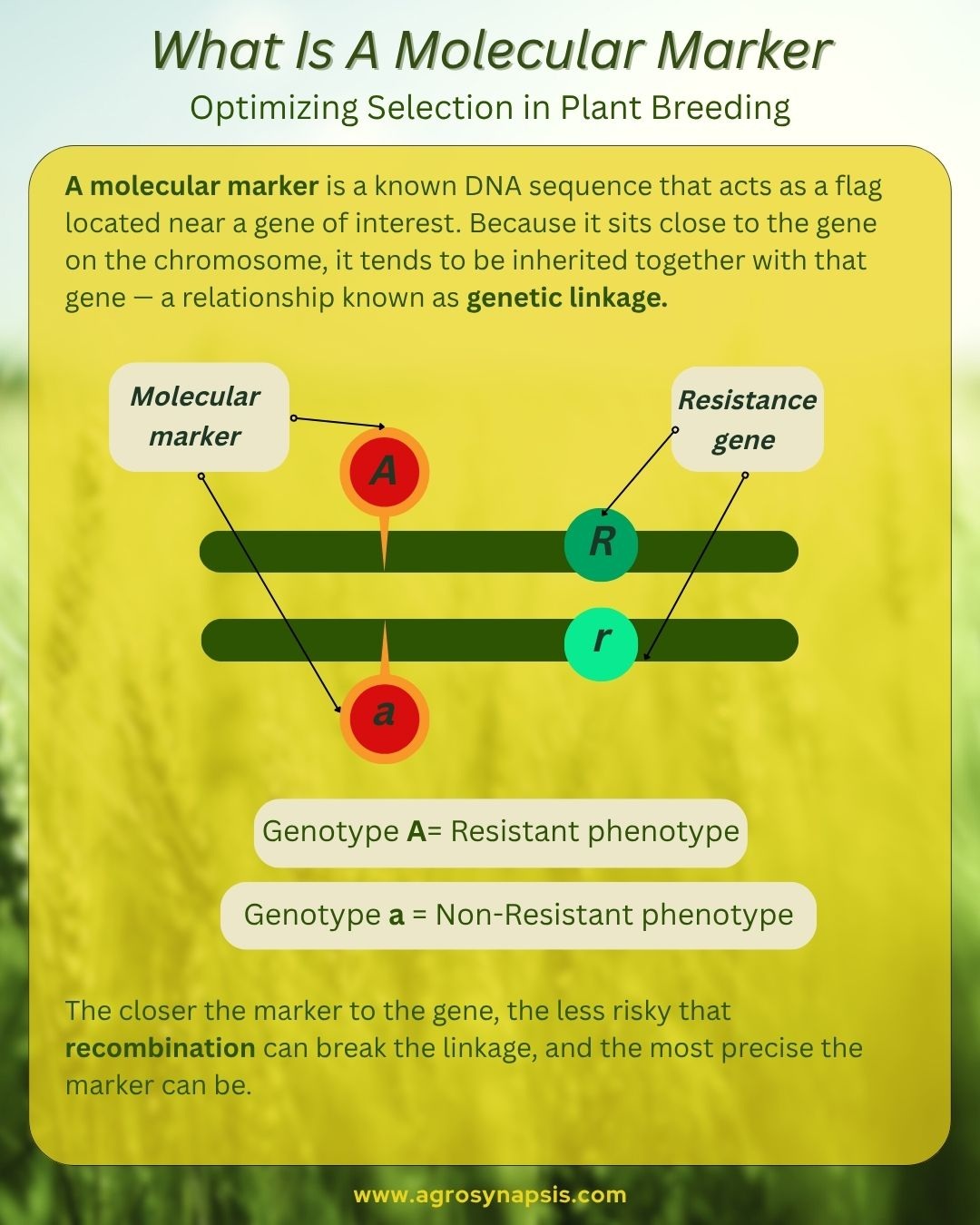In modern plant breeding, molecular markers are essential tools for identifying and tracking genetic traits at the DNA level — long before they are visible in the field.
A 𝗺𝗼𝗹𝗲𝗰𝘂𝗹𝗮𝗿 𝗺𝗮𝗿𝗸𝗲𝗿 is a known DNA sequence that acts as a flag located near a gene of interest, such as one controlling disease resistance, yield, or stress tolerance. Because it sits close to the gene on the chromosome, it tends to be inherited together with that gene — a relationship known as 𝗴𝗲𝗻𝗲𝘁𝗶𝗰 𝗹𝗶𝗻𝗸𝗮𝗴𝗲
🌱 This linkage allows breeders to use marker-assisted selection (MAS): by selecting for the marker, they indirectly select for the trait, saving time and resources.
But how do we know that a marker is close to a gene?
This is where 𝗿𝗲𝗰𝗼𝗺𝗯𝗶𝗻𝗮𝘁𝗶𝗼𝗻 𝗳𝗿𝗲𝗾𝘂𝗲𝗻𝗰𝘆 comes in.
When we analyze a population that segregates for a trait (e.g., resistant vs. susceptible plants), we look at the frequencies of marker alleles in each phenotypic group. If a marker is closely linked to the gene, it will not segregate independently — certain marker alleles will appear more frequently in one phenotype group than in the other. This statistical association reveals that the marker is near the gene of interest.
📍 The closer the marker is to the gene, the lower the recombination frequency — and the stronger the association. Conversely, markers further away may still be associated with the trait, but with less precision, since recombination events can separate them from the gene during meiosis.
✅ The most effective markers are either within the gene or located very close to it .
🎯 If you find our content helpful and want to strengthen your skills, AgroSynapsis invites you to fill out our short training interest form. By doing so, you’ll help us tailor upcoming workshops to your real needs—and you’ll be the first to receive early access and special discounts for future sessions.
👉 https://lnkd.in/g3tApqPz
What is a Molecular Marker in Plant Breeding?

by

